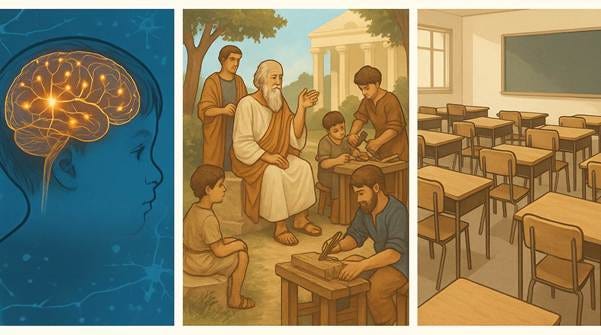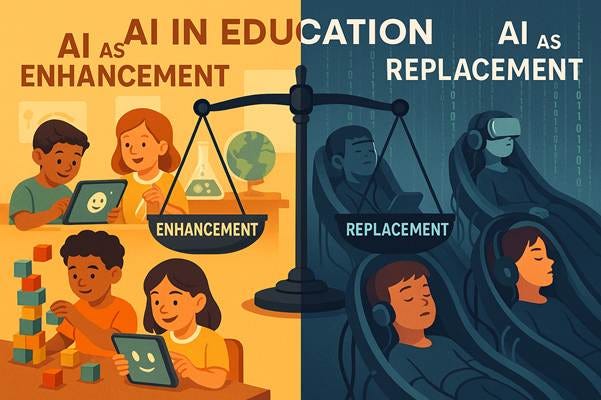I am back … to continue writing from my cozy corner on themodernworld.com. As usual, I've been brewing over some unfinished thoughts. And nothing clears the mind like putting pen to paper (or fingers to keyboard in this case).
This time, it's all about the incredible science of young brains, the wisdom from our ancestors, and why our current education setup isn't cutting it and is actually doing quiet the opposite...
I've double-checked the facts with some fresh research, and I'll weave in more examples to keep things lively. Plus, let's explore some modern fixes and real-world stories to make this even more relatable. Keeping it simple, engaging, and straight from the heart, so let's jump in.
Why Early Years Are a Superpower
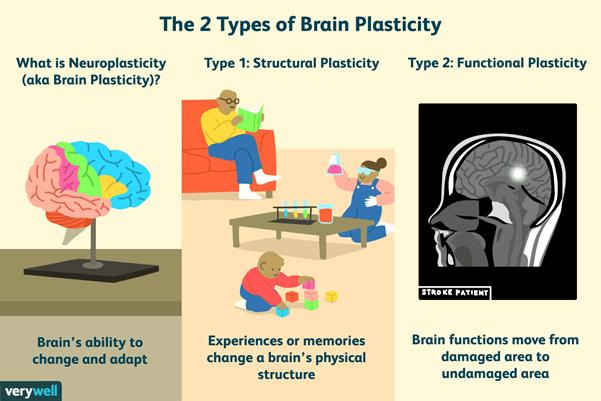
Let's kick off with the brain basics. It's mind-blowing how nature sets kids up for success, if we don't mess it up. And unfortunately we do mess it up …
Babies are born with roughly 100 billion neurons. The same number as adults (though some pruning happens later, dropping it slightly to around 86 billion in grown-ups). But the real magic? Babies have WAY more synaptic connections. That is the links between neurons that process and store information. This overabundance is like a blank canvas, ready to adapt to any environment.
Peak synapse density comes early: from birth to around age 3, it can be up to 50-100% higher than in adults, depending on the brain region.
Can you imagine?? For example, in the visual cortex, it surges around 3-4 months old. This makes the brain super plastic, which means that it changes shape based on experiences, soaking up skills like a sponge.
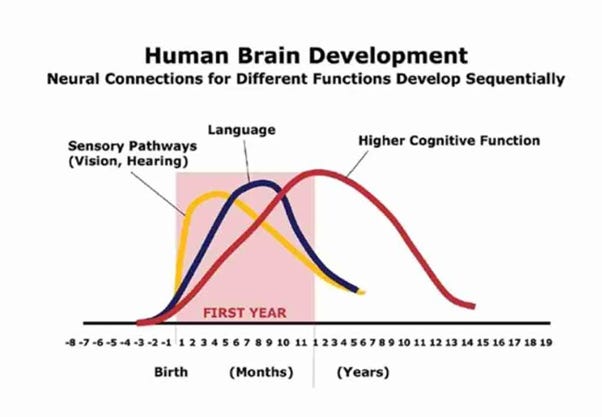
The next step is synaptic pruning. It starts in early childhood and ramping up through adolescence (even into the late 20s). During this stage, the brain trims unused connections for efficiency. Between ages 2 and 10, about 50% of extra synapses might get chopped in some areas. It's like editing a messy first draft. That is, strong links stay, weak ones go. In other words, skills that you learn between 2 and 10, will follow you for life.
To say it simple, the parts of the brain that will be active between 2 and 10, will remain active and won’t be pruned. So if you miss the boat on key experiences early, rebuilding them later is going to be tougher.
Why does this matter for learning? Plasticity peaks when young, making it the best time for learning languages, motor skills, and problem-solving. Studies show kids under 3 can pick up multiple languages effortlessly, wiring their brains for lifelong advantages. Imagine a toddler learning math through block-building games or science via backyard experiments. That's structured play shaping neural architecture for good and for life!
How Ancient Kids Thrived with Hands-On Responsibility

History backs this up beautifully. For millennia, childhood wasn't about sitting in desks; it was active, immersive, and tied to real life. Perfect for that plastic brain.
Take ancient Greece:
Boys in Athens started formal education around age 7, learning reading, writing, music, and athletics through public schools or tutors, but it was practical and community-based.
In Sparta, it was tougher. Kids entered the agoge system at 7, facing boot-camp style training in survival, combat, and citizenship, building resilience early. Girls learned household skills at home, but everyone contributed young.
In ancient Rome, parents handled early education, teaching morals and basics at home before kids hit formal schools around age 7 for grammar and rhetoric. By their teens, many were apprenticed in trades or farms, herding animals or helping with harvests. That is real responsibility that matched brain development. How did they know? Well … thousands of years of experience…
Even in ancient Egypt, education was skill-focused: Kids trained as scribes from age 5, learning hieroglyphs and math through hands-on practice, while others picked up farming or crafts early. Hunter-gatherer societies worldwide had kids foraging or hunting by age 6-8, fostering independence.
Contrast this with the modern shift:
The Prussian system, born in the early 1800s after defeats to Napoleon, aimed to create obedient citizens and soldiers through mandatory, structured schooling.
It emphasized conformity over creativity, influencing today's global models. No wonder it delays maturity. Kids spend years in passive dependency, missing that historical immersion.
The Modern Mismatch: Delayed Development and Its Consequences
Fast-forward, and we're paying the price.
Prolonged childhood means skills and responsibility come late, leading to more "infantile adults" lacking grit and initiative.
I've seen it teaching at Universities and higher education institutes in Greece, the UK, and Australia. Chinese students for example often excel in focus and results, thanks to a rigorous, exam-heavy system with large classes and long hours, but they can struggle with creative problem-solving or ethical debates, influenced by a more authoritarian setup. Western kids, from holistic systems, shine in innovation but sometimes lack discipline.
Schools prioritize tests over life skills, setting kids up for future hurdles like job dissatisfaction or mental health woes. Studies link delayed skill-building to higher anxiety in young adults.
Schools That Align with Brain Science and History
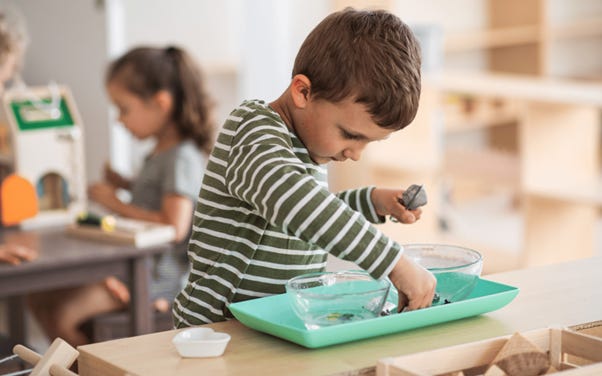
But it's not all doom. Some approaches nail it by blending biology and ancient wisdom.
Montessori schools, for instance, let kids explore hands-on from age 3, with mixed-age groups fostering responsibility like our ancestors' communities. Kids learn math via beads or science through gardens, tapping plasticity without rote drills.
Waldorf education emphasizes creativity and play early, introducing academics later but through stories and arts, echoing Greek holistic training. Research shows these kids often outperform in emotional intelligence and adaptability.
Even tech-savvy programs, like Finland's play-based system, start school at 7 with short days focused on skills, leading to top global outcomes.
At home, parents can DIY: Turn chores into games (cooking teaches math), read interactively, or encourage outdoor adventures. My son has been active since the age of 4, from treasure hunting and DIY projects to diving, skiing, piano, caving, rappelling, and even becoming a young entrepreneur at the age of 9. He's grown resilient, sharp and at times unbelievably wise - and I am not saying that because he is my son. No wonder school is boring for him...
AI in the Mix? Threat or Tool for Education?
Now, about AI. It's exploding in 2025, personalizing learning like never before, from adaptive tutors to instant feedback. But if misused, it could worsen passivity, automating thinking and widening gaps. Think The Matrix: Are we plugging kids into illusions, or using AI to enhance real experiences? Balance it with hands-on to amplify, not replace, brain growth.
Wrapping It Up, Time to Rethink and Act
Blending brain facts, history, and modern tweaks … we can do better. Don't waste those golden years. Push for experiential education that builds capable humans. Do not go for "let the kids just play"; their brains are developing, and they are not capable of directing their own learning in complex ways like X and Y. Pure nonsense. Especially today where ‘play’ is mostly ‘screens’ of all types…
These are experiments that put our kids' future in jeopardy. The opposition I have faced with my son starting a business, learning advanced physics, electronics and advanced DIY and other skills that are supposed to be for older children is beyond my comprehension... Ignorance is bliss, they say. But is it?
What tweaks have you made at home or school? Share below; let's start a change.
Until next time, question everything!


